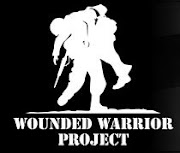MUMBAI, India – A state official says the siege has ended Mumbai's Taj Mahal hotel and the last three gunmen there have been killed.
An official with the Maharashtra state home department, speaking on customary condition of anonymity, said there were no further details.
At least 119 people were killed and 288 injured when suspected Islamic militants attacked 10 sites in Mumbai.
Black-clad Indian commandoes raided two luxury hotels to try to free hostages Thursday, and explosions and gunshots shook India's financial capital a day after the attacks.
About 10 to 12 gunmen remained holed up inside the hotels and a Jewish center, a top Indian general said. The remaining gunmen appeared to have been killed or captured, Maj. Gen. R.K. Hooda told New Delhi Television.
Authorities said 119 people died and 288 were injured when suspected Islamic militants — armed with assault rifles, hand grenades and explosives — launched a highly coordinated attack against 10 sites in the city Wednesday night.
Officials said eight militants were also killed.
Dozens of people were being held hostage at the hotels, as well as a nearby Jewish center, by the well-trained and heavily armed gunmen, authorities said.
While hostages trickled out of the hotels throughout the day, witnesses said many bodies remained inside and the two-day siege showed few signs of ending quickly. Several bodies were carried out of the five-star Taj Mahal Palace and Tower hotel.
The attackers had specifically targeted Britons and Americans inside the hotels, witnesses said.
Dozens of people were also apparently still hiding in their hotel rooms, terrified by occasional bursts of gunfire and explosions, as well as fires burning in parts of both hotels, and waiting for authorities to get them to safety.
After dusk Thursday, police brought hostages out of the Oberoi, one of the city's best-known five-star hotels.
One man, a who identified himself as a Pole but did not give his name, told reporters he had seen many bodies inside, but refused to give more details, saying he had promised police not to discuss details of the rescue operation.
The Maharashtra state home ministry said 84 people had been freed from the Oberoi — 60 of them hostages — and dozens more were still trapped inside.
Police said they were going slowly to protect the captives.
A previously unknown Islamic militant group claimed responsibility for the carnage, the latest in a series of terror attacks over the past three years that have dented India's image as an industrious nation galloping toward prosperity.
Among the dead were at least four Australian and a Japanese national, according to the state home ministry. An Italian, a Briton and a German were also killed, according to their foreign ministries.
The most high-profile target was the Taj Mahal hotel, a landmark of Mumbai luxury since 1903, and a favorite watering hole of the city's elite.
Police loudspeakers declared a curfew around the hotel Thursday afternoon, and commandos ran into the building as fresh gunshots rang out from the area. Into the night, brief exchanges of gunfire and explosions could be heard coming from the building.
The attackers, dressed in black shirts and jeans, stormed into the hotel about 9:45 p.m. Wednesday and opened fire indiscriminately.
Dalbir Bains, who runs a lingerie shop in Mumbai, was about to eat a steak by the hotel pool when she heard gunfire. She ran upstairs, taking refuge in the Sea Lounge restaurant with about 50 other people.
They huddled beneath tables in the dark, trying to remain silent as explosions went off.
"We were trying not to draw attention to ourselves," she said. The group managed to escape before dawn.
The gunmen also seized the Mumbai headquarters of the ultra-orthodox Jewish outreach group Chabad Lubavitch. Around 10:30 a.m., a woman, a child and an Indian cook were seen being led out of the building by police, said one witness.
Chabad spokesman Moni Ender in Israel said there were eight Israelis inside the house, including Rabbi Gavriel Noach Holtzberg and his wife.
Among those foreigners still held captive in all three buildings were Americans, British, Italians, Swedes, Canadians, Yemenis, New Zealanders, Spaniards, Turks, French, Israelis and a Singaporean.
At least three top Indian police officers — including the chief of the anti-terror squad — were among those killed, said Roy.
The United States and Pakistan were among the countries that condemned the attacks.
In Washington, President George W. Bush offered Indian Prime Minister Manmohan Singh "support and assistance" as he works to restore order in the populous and growing Southwest Asian nation, according to White House press secretary Dana Perino.
The motive for the onslaught was not immediately clear, but Mumbai has frequently been targeted in terrorist attacks blamed on Islamic extremists, including a series of bombings in July 2006 that killed 187 people.
An Indian media report said a previously unknown group calling itself the Deccan Mujahideen claimed responsibility for the attacks in e-mails to several media outlets. There was no way to verify that claim.
Magnus Ranstorp, a terrorism specialist with the Swedish National Defense College, said there are "very strong suspicions" that the coordinated Mumbai attacks have a link to al-Qaida.
He said the fact that Britons and Americans were singled out is one indicator, along with the coordinated style of the attacks.
India's prime minister blamed "external forces."
"The well-planned and well-orchestrated attacks, probably with external linkages, were intended to create a sense of panic, by choosing high profile targets and indiscriminately killing foreigners," Singh said in address to the nation.
Indian navy spokesman Capt. Manohar Nambiar said navy officers had boarded a cargo vessel that had recently come to Mumbai from Karachi, Pakistan. Hours later, he said nothing suspicious had been found on board and the ship had been released.
Mumbai, on the western coast of India overlooking the Arabian Sea, is home to splendid Victorian architecture built during the British Raj and is one of the most populated cities in the world with some 18 million crammed into shantytowns, high rises and crumbling mansions.
Among the other places attacked was the 19th century Chhatrapati Shivaji railroad station — a beautiful example of Victorian Gothic architecture — where gunmen sprayed bullets into the crowded terminal, leaving the floor splattered with blood.
"They just fired randomly at people and then ran away. In seconds, people fell to the ground," said Nasim Inam, a witness.
Other gunmen attacked Leopold's restaurant, a landmark popular with foreigners, and the police headquarters in southern Mumbai, the area where most of the attacks took place. Gunmen also attacked Cama and Albless Hospital and G.T. Hospital.
An official with the Maharashtra state home department, speaking on customary condition of anonymity, said there were no further details.
At least 119 people were killed and 288 injured when suspected Islamic militants attacked 10 sites in Mumbai.
Black-clad Indian commandoes raided two luxury hotels to try to free hostages Thursday, and explosions and gunshots shook India's financial capital a day after the attacks.
About 10 to 12 gunmen remained holed up inside the hotels and a Jewish center, a top Indian general said. The remaining gunmen appeared to have been killed or captured, Maj. Gen. R.K. Hooda told New Delhi Television.
Authorities said 119 people died and 288 were injured when suspected Islamic militants — armed with assault rifles, hand grenades and explosives — launched a highly coordinated attack against 10 sites in the city Wednesday night.
Officials said eight militants were also killed.
Dozens of people were being held hostage at the hotels, as well as a nearby Jewish center, by the well-trained and heavily armed gunmen, authorities said.
While hostages trickled out of the hotels throughout the day, witnesses said many bodies remained inside and the two-day siege showed few signs of ending quickly. Several bodies were carried out of the five-star Taj Mahal Palace and Tower hotel.
The attackers had specifically targeted Britons and Americans inside the hotels, witnesses said.
Dozens of people were also apparently still hiding in their hotel rooms, terrified by occasional bursts of gunfire and explosions, as well as fires burning in parts of both hotels, and waiting for authorities to get them to safety.
After dusk Thursday, police brought hostages out of the Oberoi, one of the city's best-known five-star hotels.
One man, a who identified himself as a Pole but did not give his name, told reporters he had seen many bodies inside, but refused to give more details, saying he had promised police not to discuss details of the rescue operation.
The Maharashtra state home ministry said 84 people had been freed from the Oberoi — 60 of them hostages — and dozens more were still trapped inside.
Police said they were going slowly to protect the captives.
A previously unknown Islamic militant group claimed responsibility for the carnage, the latest in a series of terror attacks over the past three years that have dented India's image as an industrious nation galloping toward prosperity.
Among the dead were at least four Australian and a Japanese national, according to the state home ministry. An Italian, a Briton and a German were also killed, according to their foreign ministries.
The most high-profile target was the Taj Mahal hotel, a landmark of Mumbai luxury since 1903, and a favorite watering hole of the city's elite.
Police loudspeakers declared a curfew around the hotel Thursday afternoon, and commandos ran into the building as fresh gunshots rang out from the area. Into the night, brief exchanges of gunfire and explosions could be heard coming from the building.
The attackers, dressed in black shirts and jeans, stormed into the hotel about 9:45 p.m. Wednesday and opened fire indiscriminately.
Dalbir Bains, who runs a lingerie shop in Mumbai, was about to eat a steak by the hotel pool when she heard gunfire. She ran upstairs, taking refuge in the Sea Lounge restaurant with about 50 other people.
They huddled beneath tables in the dark, trying to remain silent as explosions went off.
"We were trying not to draw attention to ourselves," she said. The group managed to escape before dawn.
The gunmen also seized the Mumbai headquarters of the ultra-orthodox Jewish outreach group Chabad Lubavitch. Around 10:30 a.m., a woman, a child and an Indian cook were seen being led out of the building by police, said one witness.
Chabad spokesman Moni Ender in Israel said there were eight Israelis inside the house, including Rabbi Gavriel Noach Holtzberg and his wife.
Among those foreigners still held captive in all three buildings were Americans, British, Italians, Swedes, Canadians, Yemenis, New Zealanders, Spaniards, Turks, French, Israelis and a Singaporean.
At least three top Indian police officers — including the chief of the anti-terror squad — were among those killed, said Roy.
The United States and Pakistan were among the countries that condemned the attacks.
In Washington, President George W. Bush offered Indian Prime Minister Manmohan Singh "support and assistance" as he works to restore order in the populous and growing Southwest Asian nation, according to White House press secretary Dana Perino.
The motive for the onslaught was not immediately clear, but Mumbai has frequently been targeted in terrorist attacks blamed on Islamic extremists, including a series of bombings in July 2006 that killed 187 people.
An Indian media report said a previously unknown group calling itself the Deccan Mujahideen claimed responsibility for the attacks in e-mails to several media outlets. There was no way to verify that claim.
Magnus Ranstorp, a terrorism specialist with the Swedish National Defense College, said there are "very strong suspicions" that the coordinated Mumbai attacks have a link to al-Qaida.
He said the fact that Britons and Americans were singled out is one indicator, along with the coordinated style of the attacks.
India's prime minister blamed "external forces."
"The well-planned and well-orchestrated attacks, probably with external linkages, were intended to create a sense of panic, by choosing high profile targets and indiscriminately killing foreigners," Singh said in address to the nation.
Indian navy spokesman Capt. Manohar Nambiar said navy officers had boarded a cargo vessel that had recently come to Mumbai from Karachi, Pakistan. Hours later, he said nothing suspicious had been found on board and the ship had been released.
Mumbai, on the western coast of India overlooking the Arabian Sea, is home to splendid Victorian architecture built during the British Raj and is one of the most populated cities in the world with some 18 million crammed into shantytowns, high rises and crumbling mansions.
Among the other places attacked was the 19th century Chhatrapati Shivaji railroad station — a beautiful example of Victorian Gothic architecture — where gunmen sprayed bullets into the crowded terminal, leaving the floor splattered with blood.
"They just fired randomly at people and then ran away. In seconds, people fell to the ground," said Nasim Inam, a witness.
Other gunmen attacked Leopold's restaurant, a landmark popular with foreigners, and the police headquarters in southern Mumbai, the area where most of the attacks took place. Gunmen also attacked Cama and Albless Hospital and G.T. Hospital.






No comments:
Post a Comment